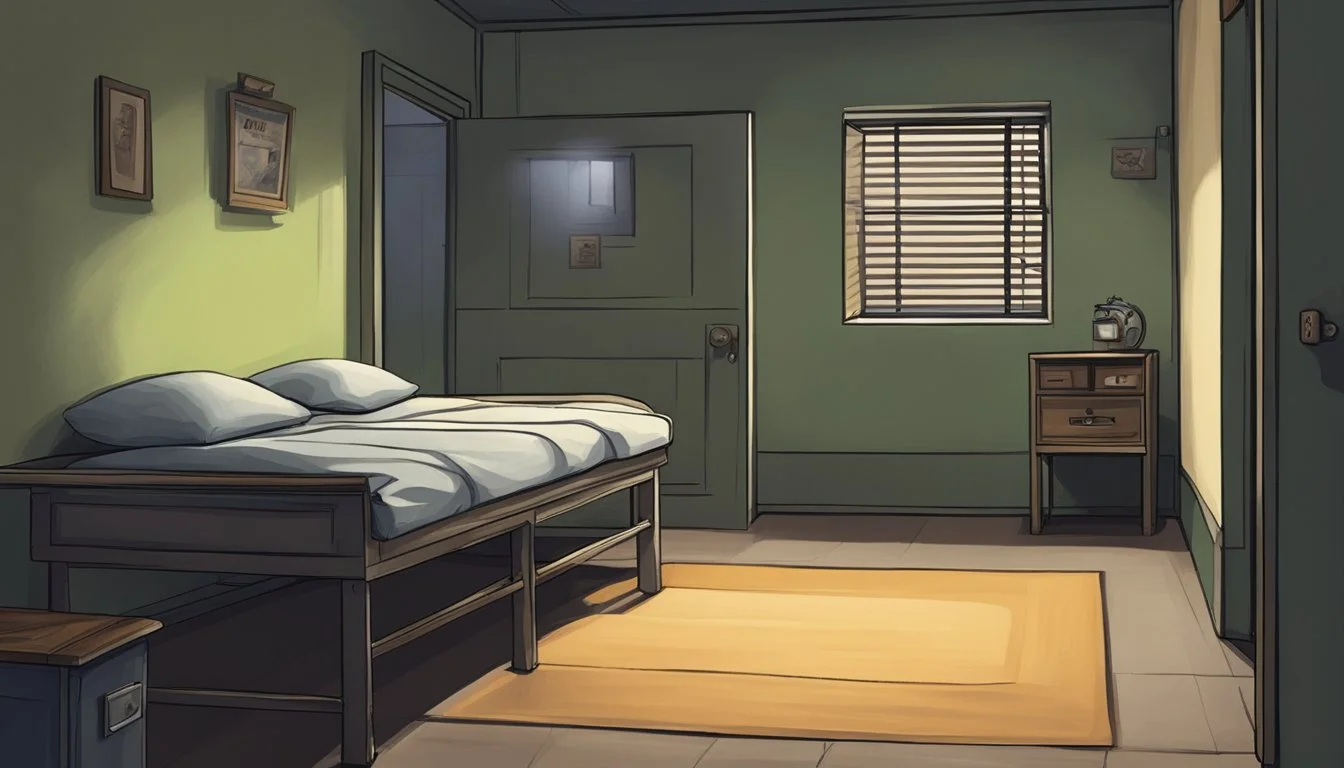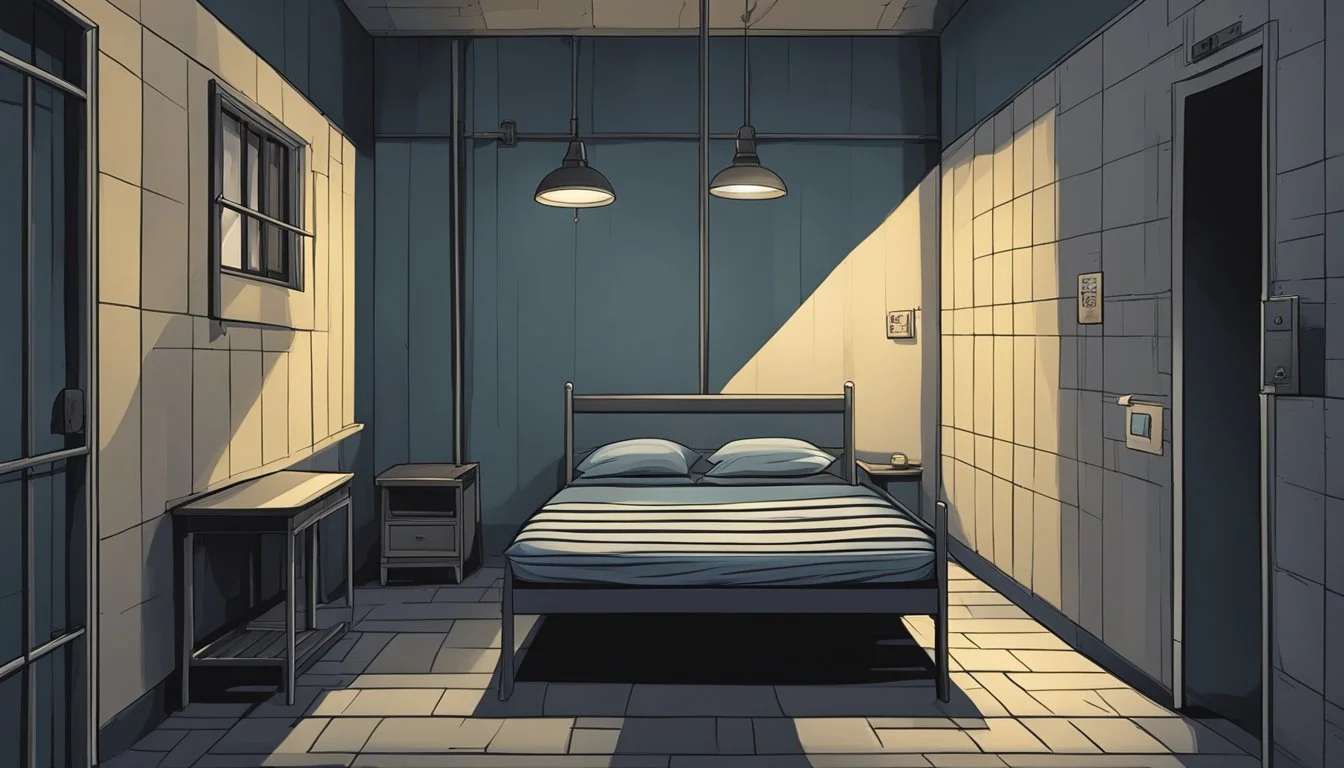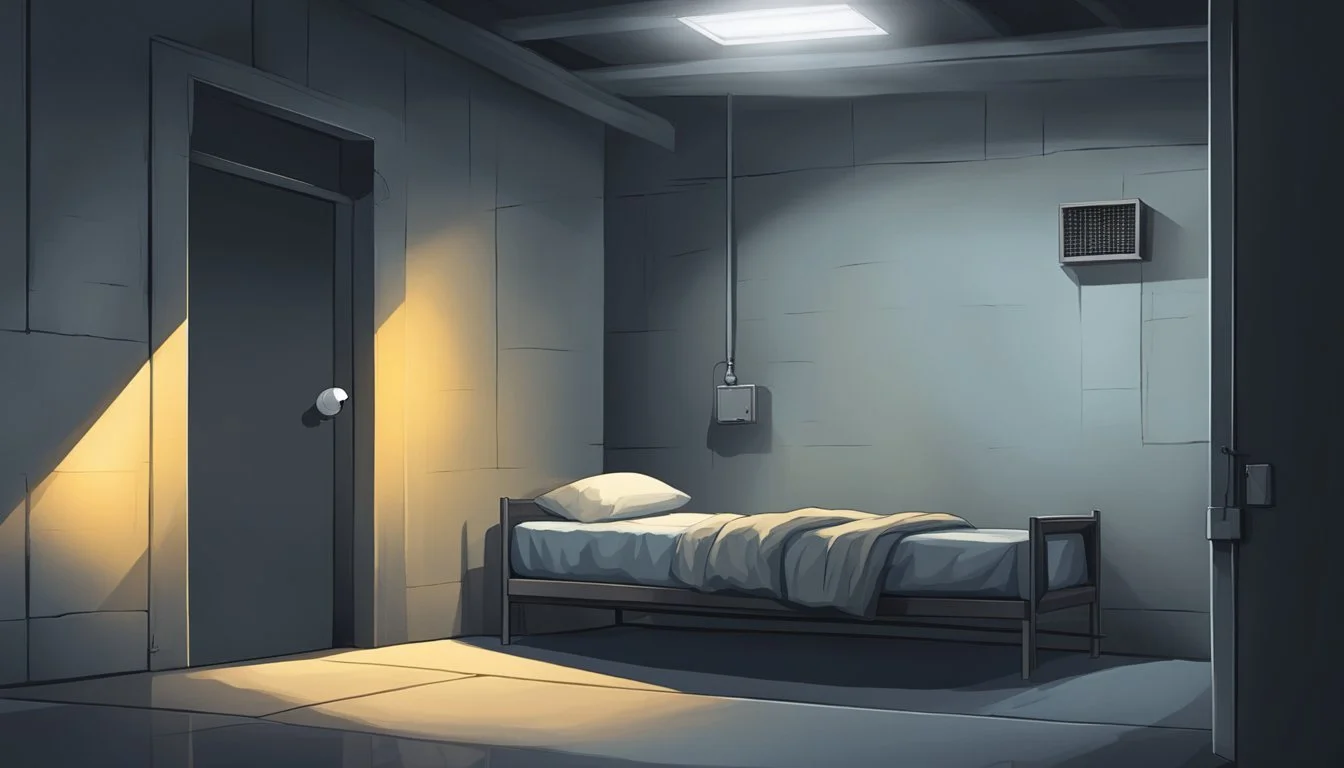Richard Ramirez's Night Stalker Nightmare Ends: Death Row Natural Causes
Serial Killer's Reign of Terror Concludes
Richard Ramirez, the infamous serial killer known as the "Night Stalker," terrorized California in the mid-1980s with a series of brutal murders and assaults. His reign of terror came to an end when he was captured and convicted of 13 counts of murder, among other charges.
After spending more than two decades on death row at San Quentin State Prison, Ramirez died of natural causes on June 7, 2013, at the age of 53. His death marked the closure of a dark chapter in California's criminal history, bringing a sense of relief to many involved in the case and the families of his victims.
Ramirez's crimes spanned from 1984 to 1985, targeting victims across various locations in California. His attacks were characterized by their brutality and seeming randomness, instilling fear in communities throughout the state. The conclusion of his life on death row, while not the execution many had anticipated, nevertheless brought an end to the Night Stalker saga.
The Life and Crimes of Richard Ramirez
Richard Ramirez terrorized Southern California in the mid-1980s, committing a series of brutal murders and sexual assaults. His actions earned him the chilling moniker "The Night Stalker" and left a trail of fear across Los Angeles and beyond.
Early Years in East Los Angeles
Born on February 29, 1960, Richard Ramirez grew up in El Paso, Texas. He moved to East Los Angeles as a teenager, where his life took a dark turn. Ramirez struggled with substance abuse and developed an interest in Satanism.
His criminal activities began with theft and drug use. These early transgressions foreshadowed the horrific crimes he would later commit.
The Night Stalker's Reign of Terror
In 1984, Ramirez embarked on a killing spree that lasted until August 1985. He targeted homes across Los Angeles and San Francisco, murdering at least 13 people and sexually assaulting numerous others.
Ramirez's crimes were marked by extreme violence and occult symbolism. He often left pentagrams at crime scenes or forced victims to "swear to Satan."
His victims ranged in age from 6 to 82. Ramirez used various weapons, including handguns, knives, and hammers.
Capture and Identification
On August 30, 1985, Ramirez was identified and captured in East Los Angeles. His arrest came after police released a mugshot to the public, leading to his recognition on the street.
A crucial piece of evidence was a fingerprint left on a stolen car. This, combined with survivor testimonies and forensic evidence, tied Ramirez to the crimes.
The capture of the Night Stalker brought relief to a terrified Southern California. Ramirez was convicted in 1989 and sentenced to death for his crimes.
The Trial and Conviction
Richard Ramirez faced justice in a high-profile trial for his heinous crimes. The proceedings captivated the public and resulted in a death penalty verdict. Extensive trial transcripts documented the shocking details presented in court.
Facing Justice
Richard Ramirez's trial began in 1989, nearly four years after his arrest. He faced 13 counts of murder and 30 additional felony charges. The prosecution presented a mountain of evidence, including fingerprints, ballistics, shoe impressions, and eyewitness testimony.
Ramirez's defense team argued that the evidence was inconclusive or flawed. They attempted to cast doubt on the prosecution's case, but the overwhelming amount of evidence proved difficult to refute.
The trial lasted over a year, making it one of the longest and most expensive in California history at the time.
Death Penalty Verdict
On September 20, 1989, the jury found Richard Ramirez guilty on all 43 counts against him. The charges included 13 murders, 5 attempted murders, 11 sexual assaults, and 14 burglaries.
The penalty phase of the trial followed, where the prosecution sought the death penalty. They highlighted the brutality of Ramirez's crimes and their impact on the victims' families.
On November 7, 1989, the jury recommended the death penalty for Ramirez. The judge formally sentenced him to death in the gas chamber on November 7, 1989.
Trial Transcripts and Public Reaction
The trial transcripts revealed gruesome details of Ramirez's crimes, shocking both the courtroom and the public. Witness testimonies painted a picture of a ruthless killer who terrorized Southern California.
Media coverage of the trial was extensive, with newspapers and TV stations providing daily updates. The public's fascination with the case led to packed courtrooms and intense scrutiny of every development.
Many victims' family members attended the trial, seeking closure and justice. Their emotional reactions to the proceedings and verdict were widely reported, adding a human element to the legal proceedings.
Death Row and Final Days
Richard Ramirez spent over two decades on death row at San Quentin State Prison before his death in 2013. His time in prison was marked by deteriorating health and various medical issues.
Years at San Quentin State Prison
Ramirez arrived at San Quentin in 1989 after his conviction. He occupied a single cell in the prison's East Block, reserved for condemned inmates. During his incarceration, Ramirez maintained his notoriety through correspondence with fans and occasional media interviews.
Prison officials kept him under close surveillance due to his violent history. Ramirez's behavior in prison was generally described as compliant, though he remained unrepentant about his crimes.
Health Issues and Death
Ramirez's health declined significantly in his final years. He struggled with chronic substance abuse issues and was diagnosed with hepatitis C. In 2011, prison medical staff detected B-cell lymphoma, a type of blood cancer.
His condition worsened rapidly, leading to liver failure. On June 7, 2013, Ramirez died at Marin General Hospital in Greenbrae, California. The official cause of death was listed as complications from B-cell lymphoma.
Ramirez was 53 years old at the time of his death. His passing marked the end of a dark chapter in California's criminal history.
Cultural and Societal Impact
Richard Ramirez's reign of terror left an indelible mark on California and beyond. His crimes and subsequent trial captivated public attention, influencing media coverage, true crime narratives, and societal perceptions of safety.
Media and True Crime Influence
The Night Stalker case garnered intense media coverage, dominating headlines in Los Angeles and San Francisco. News outlets extensively reported on Ramirez's crimes, arrest, and trial. This sensationalized coverage contributed to a growing public fascination with true crime stories.
Television documentaries, books, and podcasts have since explored the Ramirez case in detail. His use of Satanic symbols and pentagrams at crime scenes added a sensational element that further fueled media interest.
The case became a cornerstone of true crime content, inspiring numerous retellings and analyses. This ongoing coverage has kept the Night Stalker story in the public consciousness long after Ramirez's death.
Impact on Victims and Citizens
Ramirez's crimes had a profound effect on his victims and their families. Survivors and relatives of those killed continue to grapple with the trauma inflicted by his actions.
The Night Stalker's attacks also instilled fear in California communities. Many residents altered their daily routines and increased home security measures. Sales of locks, alarm systems, and weapons surged during Ramirez's active period.
This heightened state of fear led to increased community vigilance. Neighborhood watch programs expanded, and citizens became more alert to suspicious activities in their areas.
Legacy and Continued Interest
Despite his death in 2013, public fascination with Richard Ramirez persists. True crime enthusiasts continue to study and discuss the case, analyzing Ramirez's motives and methods.
The Night Stalker case has influenced criminal psychology research and law enforcement practices. Investigators still reference the case when studying serial killer behavior and developing new detection techniques.
Ramirez's crimes have also left a lasting impact on popular culture. References to the Night Stalker appear in various forms of media, from crime dramas to horror films. This ongoing presence in cultural narratives ensures that the case remains a topic of discussion and debate.
Investigative and Legal Proceedings
The Night Stalker case involved extensive police work, forensic analysis, and a lengthy trial. Detectives pieced together evidence from multiple crime scenes to track down Richard Ramirez.
Police and Detective Work
Los Angeles County Sheriff's Detective Frank Salerno led the Night Stalker task force. Police conducted extensive neighborhood canvassing and surveillance operations. They released a mug shot of Ramirez, leading to his identification and capture.
Investigators linked crime scenes through similar modus operandi and physical evidence. They analyzed fingerprints, shoe prints, and ballistics evidence. The task force coordinated efforts across multiple jurisdictions in California.
Evidence and Crime Scene Analysis
Forensic teams meticulously processed numerous bloody crime scenes. They collected DNA samples, though DNA testing was still new at the time. Other key evidence included shoe prints, bullet casings, and stolen items.
Investigators found Satanic symbols at some scenes. They compared witness descriptions to create a composite sketch. Crime scene photos and diagrams were crucial for the prosecution's case.
Ramirez's trial lasted over a year. He received 19 death sentences but died of natural causes at San Quentin in 2013.
Ramirez's Known Victims
Richard Ramirez's victims spanned a wide range of ages and backgrounds. His brutal attacks left a trail of fear across California in the mid-1980s.
Chronology of Terror
Ramirez's known murder spree began in April 1984 with the killing of 9-year-old Mei Leung in San Francisco. On June 28, 1984, he brutally murdered 79-year-old Jennie Vincow in Los Angeles.
The attacks escalated in 1985. On March 17, Ramirez killed Dayle Okazaki and seriously wounded her roommate. Later that day, he murdered Tsai-Lian Yu.
Over the next five months, Ramirez continued his reign of terror. He killed multiple victims, including couples in their homes. His methods were brutal, often involving sexual assault, strangulation, and slashed throats.
Survivors and Escapees
Some of Ramirez's intended victims managed to survive his attacks. On March 17, 1985, Maria Hernandez escaped with a gunshot wound to her face.
Bill Carns and his fiancée Inez Erickson were attacked on August 24, 1985. Carns was shot in the head but survived. Erickson was raped but also lived.
These survivors provided crucial information to investigators. Their descriptions helped create a composite sketch of the "Night Stalker" that led to Ramirez's capture on August 31, 1985.





